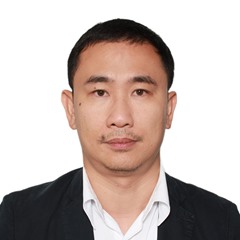Katara Project and Veolia Water Technologies have unveiled a state-of-the-art Treated Sewage Effluent (TSE) Polishing Plant, marking significant strides in environmental sustainability by conserving freshwater resources used for irrigation and district cooling makeup at Katara – Cultural Village.
This new innovative facility is set to play a key role towards fulfilling Qatar’s National Vision 2030’s environmental goals, promising to save daily between 5,000 cubic meters in winter and 15,000 cubic meters of freshwater during summer. It also reduces the energy required for production by 80% compared to traditional treatment methods, advancing resource efficiency.
Katara Project director general, engineer Mohammed al-Meer, said in a press statement: “By utilising treated sewage for irrigation and cooling, we are not only preserving vital natural resources, but also setting a new benchmark for sustainable practices in cultural and touristic destinations”.
The plant enables the full reuse of treated wastewater (TSE) to cover the irrigation needs for Katara’s green hills and supplies makeup water for the cooling towers of the district cooling system.
According to Katara Project, this innovation substitutes the use of freshwater from the Qatar General Electricity and Water Corporation (Kahramaa), achieving a cost reduction from QR9 to QR1 per cubic meter. The project was seamlessly integrated into the existing Katara Energy Centre, utilising advanced technology and design to optimise space and power within the limited plot area.
Veolia Water Technologies Middle East CEO Thierry Froment lauded the project’s alignment with Veolia’s GreenUp strategic programme, aimed at helping regions adapt to climate change.
Katara’s expanding green spaces, which cover approximately half of the Cultural Village, necessitated an innovative, sustainable, and eco-friendly solution to maintain its greenery. This project addresses that need while showcasing Qatar’s commitment to sustainable development.
During a site visit Monday, Veolia’s deputy operations director Ahmed Fahmy, along with Katara Project operations director engineer Bouthaina al-Emadi, provided insights into the plant’s design and resource utilisation.
Engineer al-Emadi further stated that the waste generated from the plant is treated to comply with the Ministry of Environment parameters. Fahmy underlined the careful planning and surveying that ensured the project’s successful integration into Katara’s existing infrastructure, specifically the Energy Centre.
“This plant had to be designed in a way to fit in an existing building. We are getting the highest recovery, minimum power supply and minimum space in order to fit within this existing area,” he said.
Fahmy highlighted the measures taken to ensure the plant’s long-term performance and sustainability, saying: “One is by doing the design from the beginning in a way that can sustain the requirement of the operation in different scenarios. Second, we have the system in order to operate the plant by qualified operators. Third, we are connecting the system to our Hubgrade digital technologies, enabling us to monitor the site 24/7 and provide essential operational insights”.

Ahmed Fahmy (right) and engineer Bouthaina al-Emadi at the site visit Monday. PICTURES: Shaji Kayamkulam

The project was seamlessly integrated into the existing Katara Energy Centre, utilising advanced technology and design to optimise space and power within the limited plot area.

Engineer Mohammed al-Meer, Katara Project director general.



